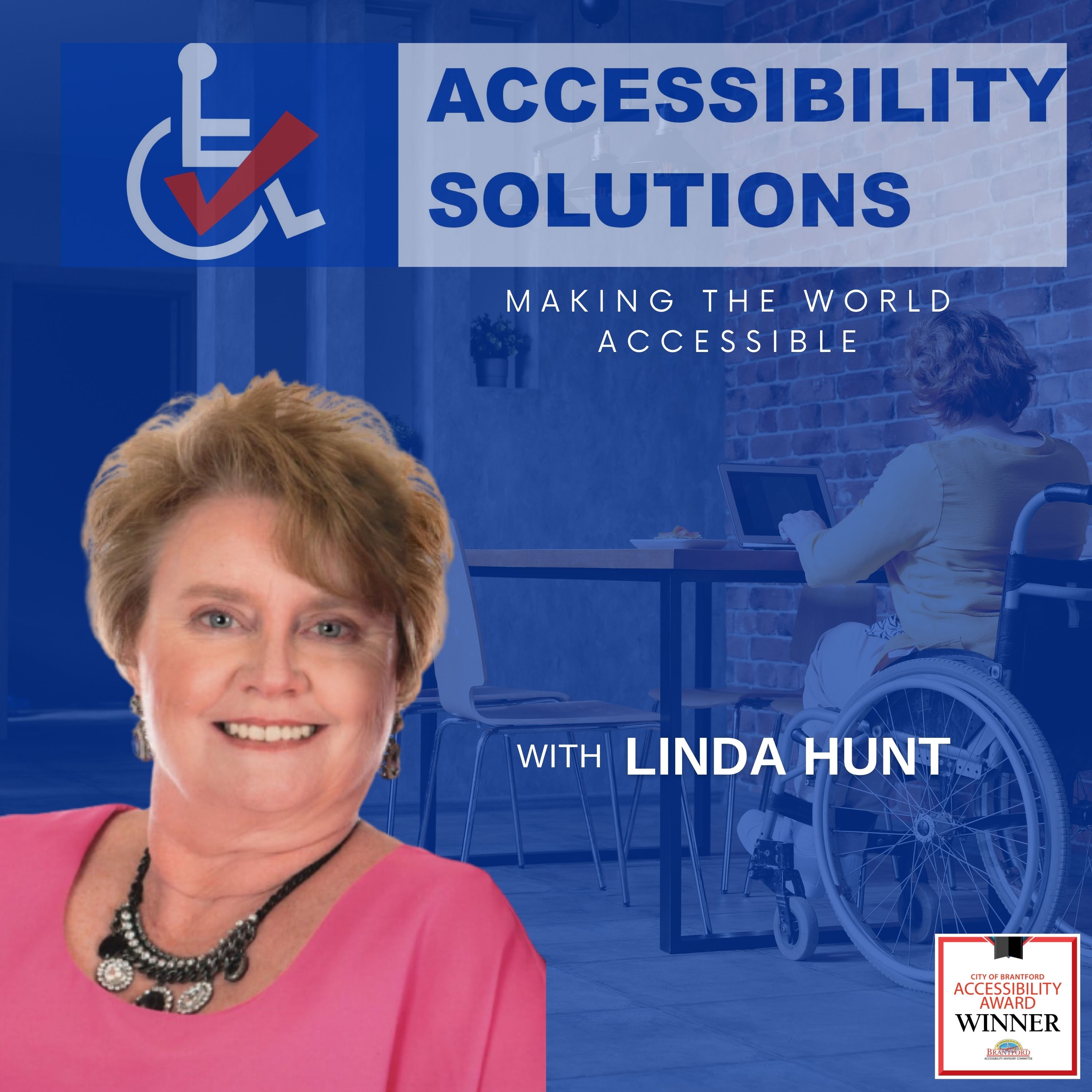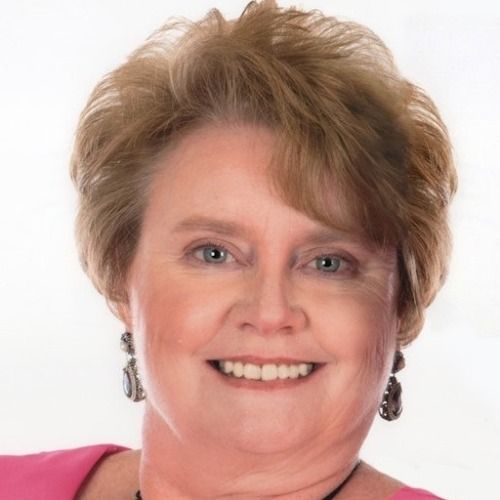Episode 3
AS:003 Embracing a Culture of Inclusion
In this episode, Linda discusses how a Culture of Inclusion has to start with Leadership and be embraced by everyone throughout a business or organization. She takes us through the 7 Pillars of Inclusion.
1. Access
2. Attitudes
3. Choice
4. Partnerships
5. Communication
6. Policy
7. Opportunity
Connect with Us:
Website – www.solutions4accessibility.com
LinkedIn - https://www.linkedin.com/company/accessibility-solutions/
Facebook - https://www.facebook.com/solutions4accessibility
YouTube - https://www.youtube.com/channel/UCRBqblsq_vxrKbdvEp2IOWQ
About the Host:
Linda Hunt Is an Award-Winning Accessibility Consultant, Speaker and Author. She is the CEO of Accessibility Solutions and an Advocate for all things related to accessibility.
Linda is the Treasurer of Citizens with Disabilities – Ontario a member of the Rick Hansen Foundation Accessibility Professional Network and a Certified Community Champion on the United Nations Convention on the Rights of Persons with Disabilities and its Optional Protocol.
Linda first became a person with a disability in 2004 since then she has been an active and engaging speaker to groups on a variety of accessibility topics.
In addition, Linda is a business owner. Along with her husband Greg they have operated Grelin Apparel Graphics for over 30 years.
Thanks for listening!
It means so much to us that you listened to our podcast! If you would like to continue the conversation with us, connect with Accessibility Solutions on LinkedIn, Facebook or subscribe to the Accessibility Solutions YouTube channel. For a FREE 15- minute consultation to discuss how accessibility can improve your business bottom line visit www.solutions4accessibility.com. Or email Linda directly linda@solutions4accessibility.com
With this podcast, we are building an engaged community that we hope to inspire to Make the World Accessible. If you know somebody who would benefit from this message, or would be an awesome addition to our community, please share it using the social media buttons on this page.
Do you have some feedback or questions about this episode? Leave a note in the comment section below!
Subscribe to the podcast
If you would like to get automatic updates of new podcast episodes, you can subscribe on the podcast app on your mobile device.
Leave us a review
We appreciate every bit of feedback to make this a value adding part of your day. Ratings and reviews from our listeners not only help us improve, but also help others find us in their podcast app. If you have a minute, an honest review on iTunes goes a long way! Thank You!!
Transcript
You are listening to Accessibility Solutions. If you're a business looking to improve your bottom line, then you're in the right place. In the show, we'll discuss how making the world accessible is great for business and the economy. My name is Lindia Hunt. And I am an award winning accessibility consultant, speaker and author, and a longtime advocate for all things related to accessibility. Thank you for joining me. So let's get started.
Linda Hunt:Hi there, and thanks for tuning in. For this week's episode, this week, we're going to be talking about embracing a culture of inclusion. embracing the culture of inclusion really needs to start at the leadership level. So any business or organization that wants to really take on the the culture of inclusion, in order to get buy in down the line must have a clear, clear culture in the organization that is really a culture of inclusion. So I want to talk about the seven pillars of inclusion. This was a project that was undertaken to look at the commonalities of inclusion for disadvantaged population, the disadvantaged populations, we're including persons with disabilities, but also including persons of different race, religion, sexual orientation. And so what I'd like to talk about today are the seven pillars of inclusion, which really looks at the specific to persons with disabilities. So even though it's part of an overall framework, they can be applied across the board. So while quite often there are studies or programs that address inclusion for people from different marginalized groups. So these operate in silos, but what is really necessary to understand is that inclusion itself impacts the level of awareness and understanding from the top level all the way down. So now the question is more how to be inclusive rather than why. And when you look at the commonalities and understanding what inclusion means. It's not to ignore the differences between targeted populations or marginalized populations, but rather to recognize that there are similarities and differences and the rationale behind the development of embracing inclusion is that it alleviates the duplication and provides a starting point for a strategy for your organization or your business to be inclusive and really to embrace the culture of inclusion.
Linda Hunt:The first pillar of inclusion is access. And so when we talk about access, we're really talking about creating a welcoming environment for everyone. So while physical access is what most people think of when they think of accessibility, in terms of the embracing the culture of inclusion, a welcoming environment of any kind occurs when there is an atmosphere and a culture of respect for all people, and where there are opportunities to participate, to have a voice and an influence on how the goods or services are delivered. So really, what what is the takeaway here is that a welcoming environment, regardless of any barriers, is really allowing access for everyone.
Linda Hunt:pillar number two is attitudes. So, if you ask the question Are you do have a positive attitude towards the inclusion of people with disabilities. Most people will say that of course they have a positive attitude towards the inclusion of persons with disabilities. Where the disconnect is is that you need to back that up with x John. So there's a big difference between positive intention and actual behavior. What we don't know is how attitudes positive or negative, negative, are manifested as behavior. So people are often feeling that they embrace a culture of inclusion, but do their attitudes and their behaviors actually pull that down into into practice.
Linda Hunt:The third pillar of inclusion is choice. What we're talking about here is when it comes to exploring choices for persons with disabilities. The inclusion of persons with disabilities in a regular provision with no modification, doesn't really take into account the choice of the person with disability, and how they would like to participate and be included. So the broader range of choices for people with disabilities takes into account that the person with the disability has the choice in how they would like to participate and be included. And again, taking into account that person's choice is the third pillar of inclusion.
Linda Hunt:The fourth pillar of inclusion partnerships, so there's no question that organizations that make good progress in ensuring inclusion are part of a core business that creates effective partnerships. Creating an inclusive environment means working with partners. This is particularly important that partnerships with disability sector organizations are taken into account when we look at these partnerships. Partnerships allow persons with disabilities to be included in policy and organizational decisions, so that the lived experience of persons with disabilities is reflected in those policy decisions. So inclusion, including people with disabilities, whether that be partnerships, formerly or informal, with persons with disabilities brings that lived experience to your to your organization and gives your culture of inclusion some real teeth, by including persons with disabilities as a partner in the decision making process of your organization.
Linda Hunt:The fifth pillar of inclusion is communication. Inclusion cannot happen alone, and people must know about intentions and actions that make inclusion a reality. So it cannot be a broad statement made at the management level without communicating that all the way down to a frontline worker. What is critically important in communicating your commitment, your intentions and your actions is that that culture of inclusion permeates through all areas of the organization. Otherwise, even though you may be embracing a culture of inclusion, and those good intentions, can become what's called a best kept secret for a handful of people. So you really need to understand that to embrace a culture of inclusion within your business or organization. That commitment to inclusion needs to be communicated internally and externally. And that your actions and intentions need to show that you are in fact, communicating to everyone involved in the organization, both internally and externally, that your organization has made the decision to embrace the culture of inclusion.
Linda Hunt:pillar number six is policy. This is developing policy at the very high level, which means that you are encompassing codes, rules, regulations, bylaws, policy documents, guidelines and even contracts that show that you have a commitment to inclusion, and that that commitment is recognized throughout all of your policies and procedures to be a long term goal of the organization So the words widely accessible here is critical to successful policy. If people don't know that your policy exists and what it stands for, then it's unlikely to be very effective. At best, it's a document that's collects dust on the shelf. And when the need arises that you can state that you have a policy of inclusion. However, that policy, procedure document, whatever it is, needs to be widely used throughout the organization. And you need buy in at the leadership level for these policies that have been developed. But also that those policies, procedures and guidelines are communicated back to the pillar of communication out throughout the organization from top all the way down to the bottom.
Linda Hunt:The seventh pillar of inclusion is opportunity. There's a distinction between opportunity and Choice. Choice is a person with a disability having a choice in what the inclusion is. pillar number seven talks about opportunity, and that is really the opportunity for everyone to be given their choice. And that choice actually being available to them. So them having the opportunity to participate in all areas of society. Again, in a perfectly accessible world, everyone would have the full opportunity to participate and be an active and engaged member of their community, because there would not be any barriers that prevent them from having that opportunity. So the details of inclusion that make inclusion work, it's not simply sufficient to offer a choice. The choice needs to be developed and thought of, so that the opportunity also exists for them.
Linda Hunt:The Seven Pillars of inclusion that I've just gone through can be adapted for any organization, or business that wishes to embrace a culture of inclusion, that embracing a culture of inclusion needs to be an organizational effort. It's not just a department, it's embracing a culture of inclusion needs to be a fully embraced culture that is throughout the organization, every department, every staff person, every policy that's made every procedure that's developed and communicated all the way down through your organization so that everyone is aware that your business or organization is embracing a culture of inclusion, and taking the steps to actually make that a reality in your business. Thanks so much for joining me. I look forward to speaking with you next week. Cheers.

